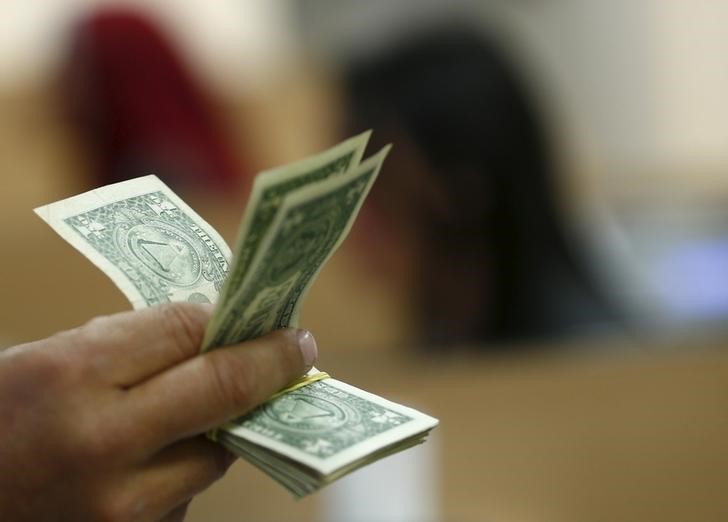By Gina Lee
Investing.com – The dollar was down on Tuesday morning in Asia but was near a three-and-a-half high as bond yields rose and the U.S.’ economic normalization from COVID-19 is expected to come faster than expected, which puts the U.S. currency at a distinct advantage.
The U.S. Dollar Index that tracks the greenback against a basket of other currencies inched down 0.03% to 92.308 by 10:56 PM ET (3:56 AM GMT).
The USD/JPY pair was up 0.22% to 109.09, with the dollar rising to its highest level against the yen in nine months and surpassing the $109 mark. Japan released data earlier in the day that said that the GDP grew 2.8% quarter-on-quarter in the fourth quarter of 2020, lower than both the 3% growth in forecasts prepared by Investing.com and the third quarter’s 5.3% growth. The data also said that GDP grew 11.7% year-on-year, also below the forecast 12.7% growth and the third quarter’s 22.9% growth.
The AUD/USD pair edged up 0.16% to 0.7661 and the NZD/USD pair inched up 0.01% to 0.7129.
The USD/CNY pair inched down 0.05% to 6.5216 while the GBP/USD pair edged up 0.16% to 1.3845.
The euro dropped to a low last seen in late November 2020, ahead of the European Central Bank handing down its policy decision on Thursday.
Investors also continue to price in increasing optimism for the U.S. economic recovery from COVID-19, as well as higher inflation, as ten-year U.S. bond yields climbed a one-year high on Friday.
There are concerns that yields could rise further, ahead of a $120 billion auction of three, ten, and 30-year Treasuries later in the week. The previous week saw a soft auction, particularly for seven-year notes, that drove yields up.
“Rising U.S. bond yields are obviously driving the dollar but what’s behind them is the realization that U.S. vaccination programmed is going ahead very fast and the U.S. economic normalization may happen earlier than people have expected, perhaps by a quarter or two,” Daiwa Securities senior strategist Yukio Ishizuki told Reuters.
Meanwhile, COVID-19 vaccines continue to be rolled out in the U.S., with around 30 million people, or 9.2% of the U.S. population, inoculated against the virus. This statistic led the U.S. Centers for Disease Control and Prevention to recommend that fully vaccinated people can meet without masks indoors in small groups with others who have been inoculated.
“That also leads to a question as to whether the Fed can maintain its projections that it will not raise rates until 2023. Some policymakers may change their views at their policy meeting next week,” Daiwa’s Ishizuki said.
The Fed will next meet for its two-day policy meeting on Mar. 16.
